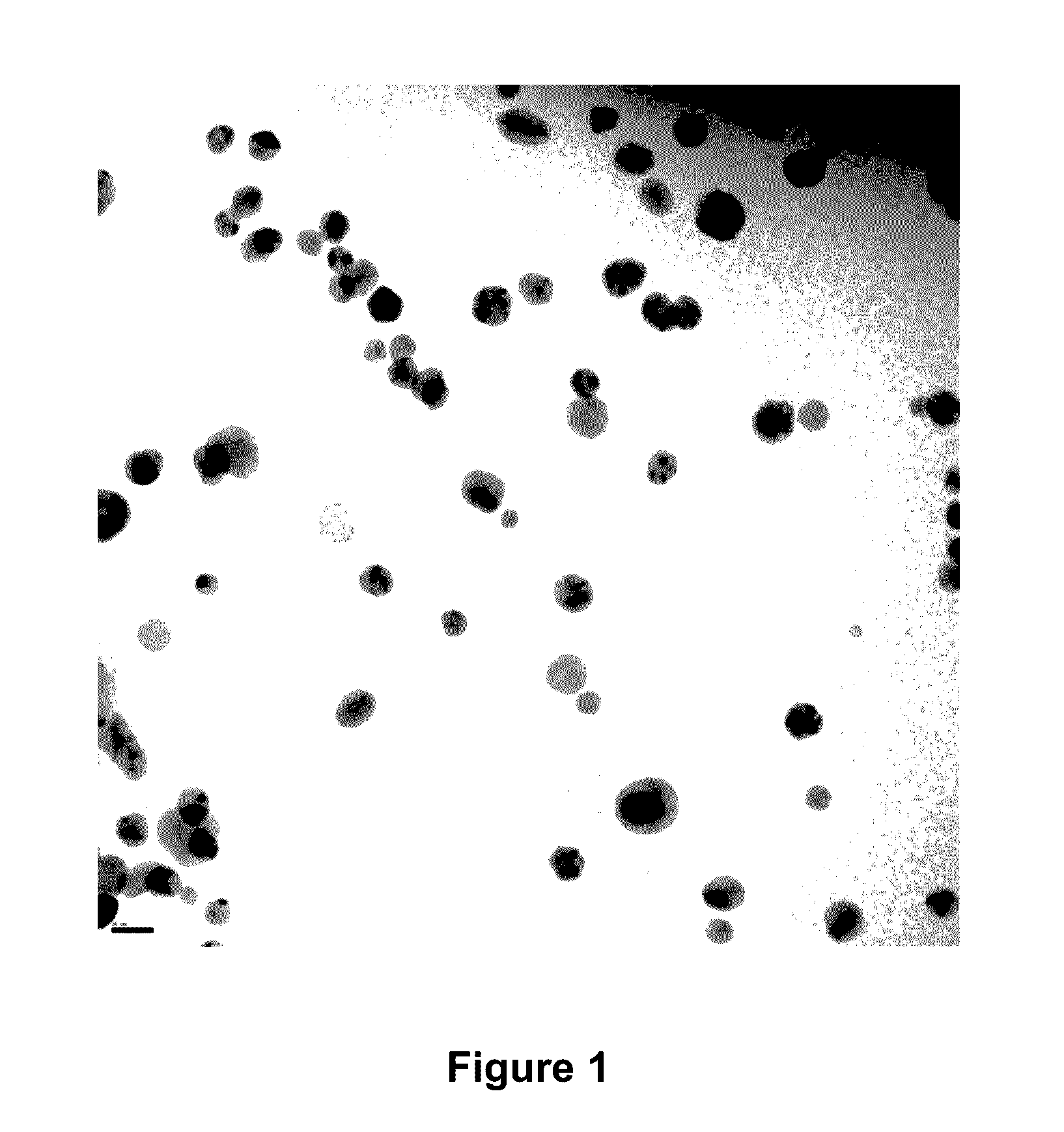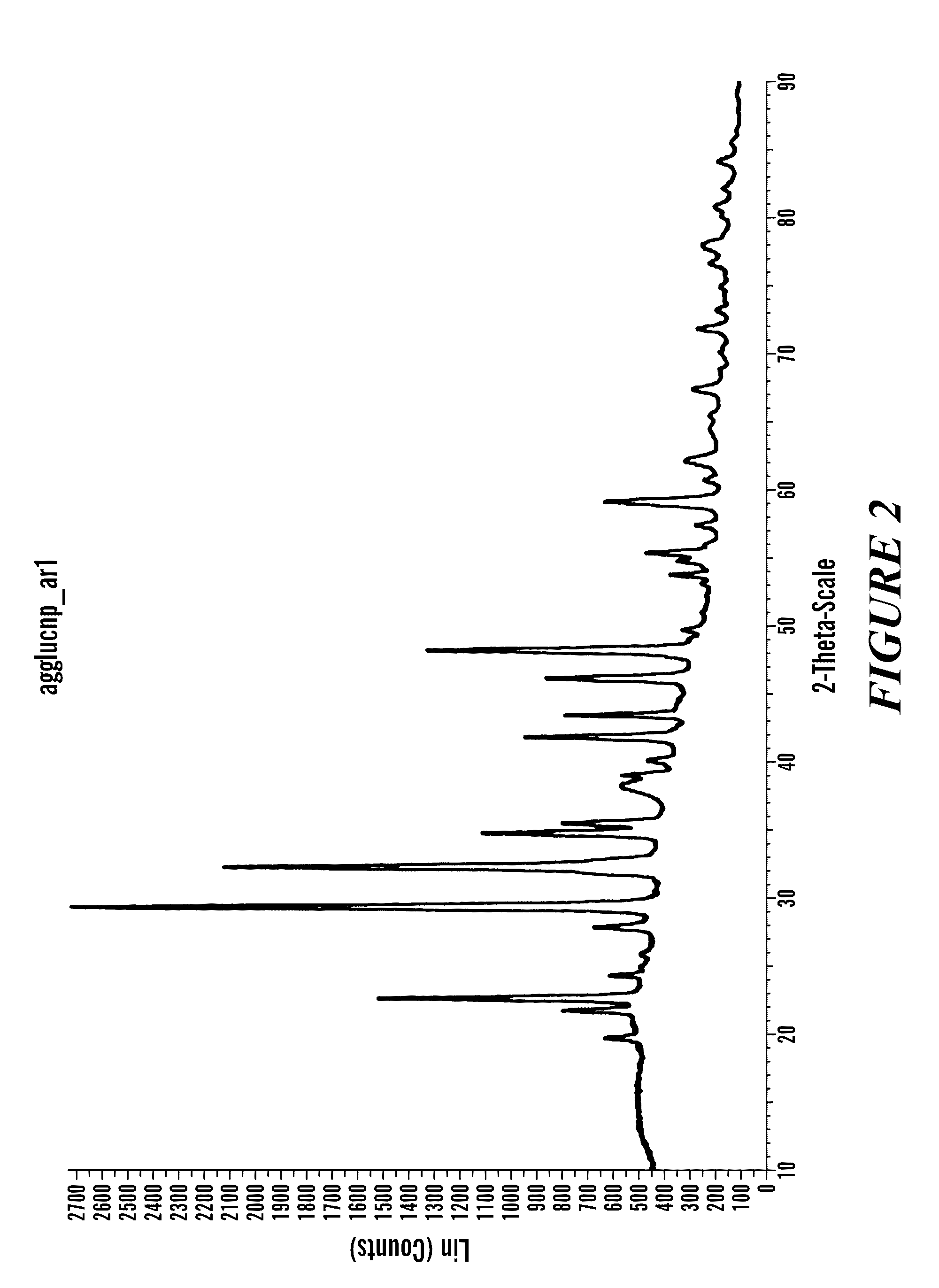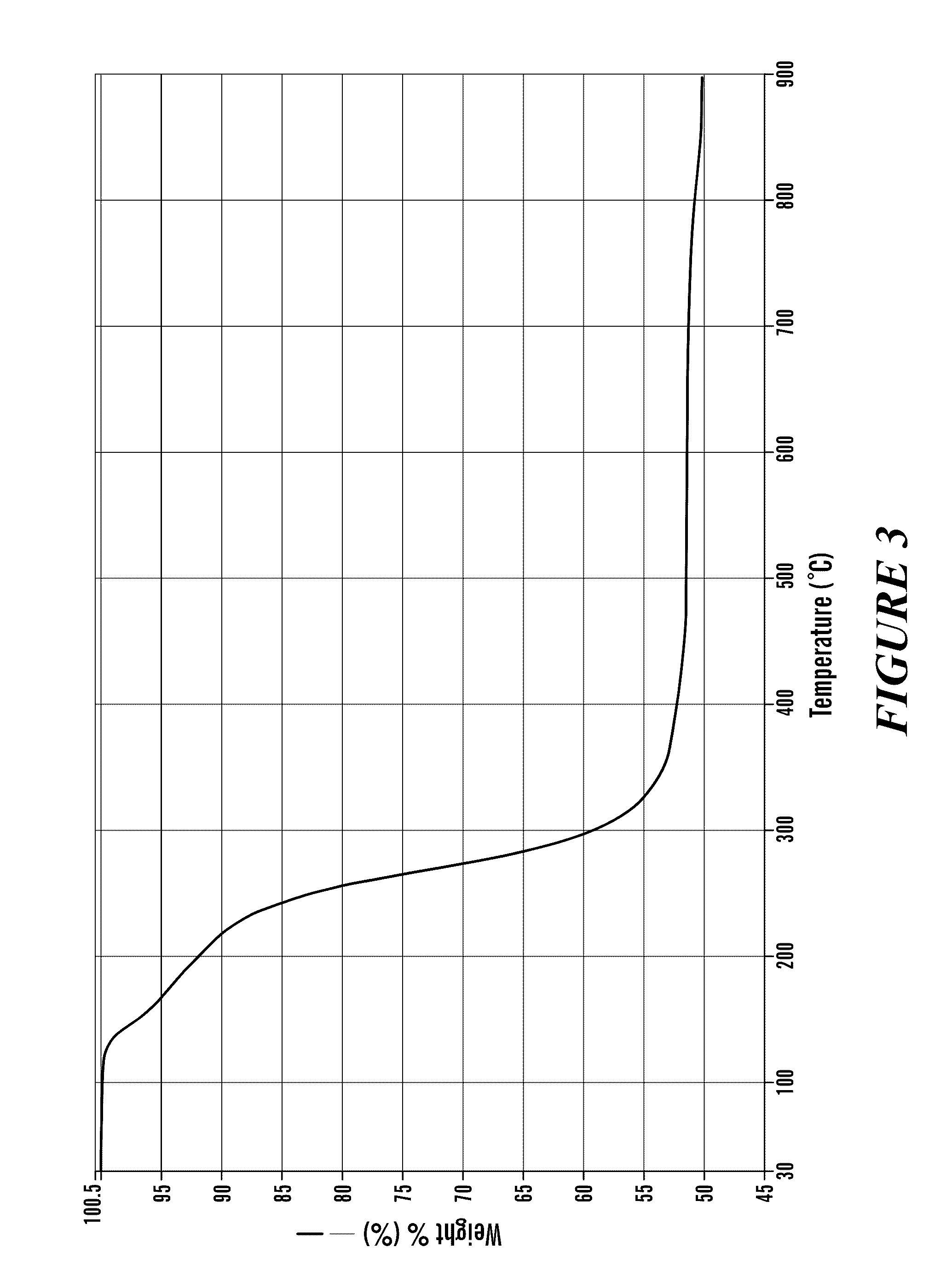Nanoparticles comprised of shells associated with charged entities and formed from monomers and methods of making and using nanoparticles
- Summary
- Abstract
- Description
- Claims
- Application Information
AI Technical Summary
Benefits of technology
Problems solved by technology
Method used
Image
Examples
example 1
Materials and Methods
[0105]Silver nitrate, D-glucuronic acid and anhydrous methanol were obtained from Sigma Aldrich. Epichlorohydrin and N, N-dimethylhexadecylamine were obtained from TCI America. Triethylamine and 2-chloroacetamide were obtained Alfa Aesar. Potassium hydroxide was obtained from VWR international. Chloroform, acetone and diethyl ether were obtained from Pharmco-AAPER. All deuterated solvents were obtained from Cambridge Isotope Laboratories, Inc. Reagents and solvents were used without further purification.
[0106]Anhydrous Proton NMR data were obtained on a Bruker Avance-400 MHz NMR spectrometer. Thermogravimetric analyses (TGA) were carried out on a Texas Instruments SDT Q600 and a Perkin-Elmer Pyris 1. TGA profiles were recorded by using a Universal Analysis program. Electrospray ionization mass spectrometric data were obtained using an Agilent 1100 Series Capillary LCMSD Trap XCT MS spectrometer. Infrared data were obtained on a Nicolet 750 spectrometer. UV / Vis s...
example 2
Cetyldimethyl Ammonium Acetamido Chloride (CDAC1)
[0111]The procedure follows earlier work by Walters and coworkers. Walters et al., “Amide-Ligand Hydrogen Bonding in Reverse Micelles,”Inorg. Chem. 44:1172-4 (2005), which is hereby incorporated by reference in its entirety. 2-chloroacetamide (1 g, 10.7 mmol) and N,N-dimethylhexadecylamine (3.6 mL, 10.7 mmol) were stirred and refluxed for 18 hours in acetonitrile. On cooling to room temperature a white crystalline product precipitated. The precipitate was collected by vacuum filtration. The crude product was then washed with diethyl ether and dried under vacuum to obtain a white powder. Yield: 3.65 g, 94%.
example 3
Acetamido Cetyl Dimethyl Ammonium Hydroxide (CDAOH)
[0112]A solution of potassium hydroxide (100 mg, 1.78 mmol) in 5 mL dry methanol was combined with CDAC1 (646 mg, 1.78 mmol) in 5 mL dry methanol and stirred at room temperature for 1 hour during which KCl salt was produced as a white precipitate. KCl was removed by benchtop centrifugation. The methanol supernatant was removed by rotary evaporation and the product was washed with diethyl ether, collected by filtration and dried under vacuum leaving a fine white powder. Yield: 614.1 mg, 82%.
PUM
| Property | Measurement | Unit |
|---|---|---|
| Concentration | aaaaa | aaaaa |
| Electric charge | aaaaa | aaaaa |
| Ratio | aaaaa | aaaaa |
Abstract
Description
Claims
Application Information
 Login to View More
Login to View More - R&D
- Intellectual Property
- Life Sciences
- Materials
- Tech Scout
- Unparalleled Data Quality
- Higher Quality Content
- 60% Fewer Hallucinations
Browse by: Latest US Patents, China's latest patents, Technical Efficacy Thesaurus, Application Domain, Technology Topic, Popular Technical Reports.
© 2025 PatSnap. All rights reserved.Legal|Privacy policy|Modern Slavery Act Transparency Statement|Sitemap|About US| Contact US: help@patsnap.com



